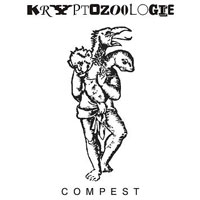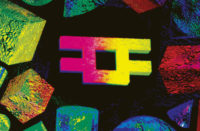
(05.05.05) The cover of Kryptozoologie, Martin Steinebach’s latest
composition as Compest, is a Duhrer-esque line drawing of a
three-headed monster, a humanoid figure with the head of an ape, a
bird and a seal. On the back of the sleeve there is a picture of a
three-armed rabbit-headed man. These two figures and the arcane
spelling of the record’s title serve to anchor Steinebach’s efforts in
the mid-14th century. Kryptozoologie is composed of five
untitled tracks, a complete suite of wandering ambience that seeks to
create something new from the pieces of the old.
Ghostly voices reverberate through spectral tunnels as bells and drums
are slowly struck while, elsewhere, radio signals are cut and spliced
as counterpoint to slow drones and limpid tone poems. Squirts of
static scamper across the aural landscape like two-headed squirrels
darting from cover, and lowing horns made from hollowed elephant tusks
sound their slumbering call from distant foothills. A pianoforte
doles out a slow dirge with funereal drums providing the solemn
heartbeat. Music for a medieval maypole ceremony whispers beneath a
brushed polyrhythm of static and a groaning mechanical drone. Martial
drums pursue a delicate bell melody and a pair of lost violins through
a ruined graveyard of cracked stones and echoing tombs.
Kryptozoologie is mercurial. There is a ritual being conducted
in here, an alchemical symphony of ancient melodies recreated with
modern mechanical noises and instruments. Madrigals of glitch and
elegies of warped drones play out against the plucked melodies of
antique stringed instruments. Steinebach creates a medieval flavored
ambient grimoire of acoustic, glitch, and industrial overtones.

Kryptozoologie is out now on Einzeleinheit.





















